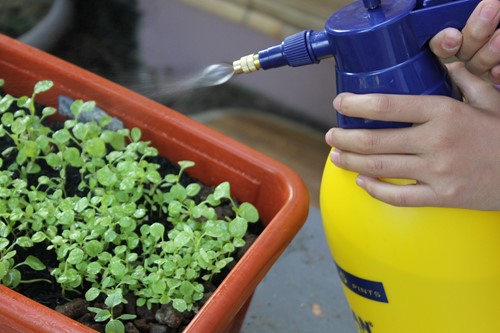
As their name implies, spider mites are arachnids. However, most arachnids are actually beneficial in the garden because they feed on common garden pests, but spider mites enjoy no such distinction. They are terribly destructive to both outdoor garden plants and houseplants, and they are particularly pernicious in hot-climate regions because they don't go through a dormant period during winter in these areas the way they do in their colder counterparts. Because they're usually feed on the underside of leaves, gardeners often don't notice them until they've done significant damage. Unlike many other pests, the damage they do doesn't happen slowly. In many cases, spider mites can destroy a plant, particularly garden vegetables, before the gardener even knows what happened.
Left unchecked, spider mites can kill or cause substantial stress to trees, shrubs and flowers. They feed on the internal fluid of plants, literally sucking their chlorophyll right out of them. Here's what you need to know about them:
Common Signs of Spider Mites
Signs of spider mites include white and/or yellow specks on the leaves, webbing and an overall bronzing or yellowing of the leaves. Needles may turn brown and fall off in coniferous evergreens, and the flowers and leaves of some plants such as azaleas may become distorted.
Spider mites themselves are difficult to notice because of their extremely small size. The average female spider mite is 1/50 of an inch long, and her male counterpart is even smaller.
How You Can Fight Back
The most essential strategy in winning the war on spider mites is to prevent them from gaining a foothold in the first place. Check any new plants at the nursery for any sign of them before introducing them to your yard and garden. Keep in mind that they're most active when it's hot and dry, so check your plants for them every two or three days during these conditions. Because they're so small, consider using a magnifying glass to inspect the underside of leaves.
Like all opportunists, spider mites take advantage of the weak, so keep your plants as healthy and strong as possible. They're particularly destructive during drought conditions, so make sure your plants are well-watered. Refrain from fertilizing during dry periods because this may further stress the plant.
Use Insecticidal Soap and/or Horticultural Oil
Spraying the plants as soon as possible with insecticidal soap or horticultural oil after becoming aware of spider mites is recommended. Repeat applications as necessary -- these are safe products that have little negative impact on people, pets or plants.
Constant vigilance is the most essential component of keeping spider mites from wreaking havoc in your garden. Once you get used to checking for them, it will become a simple matter of routine.
About the Author
